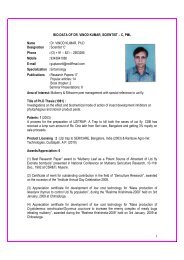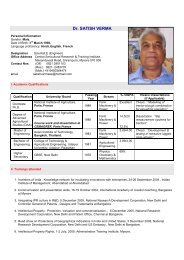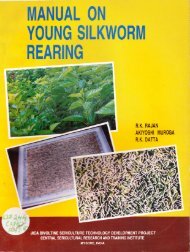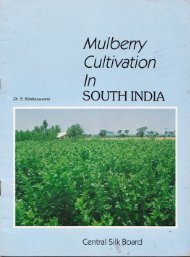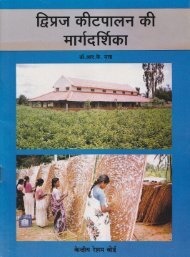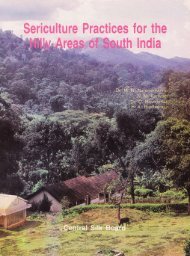BIVOLTINE RACE AND
Manual on Bivoltine Rearing, Race Maintenance and Multiplication
Manual on Bivoltine Rearing, Race Maintenance and Multiplication
- No tags were found...
You also want an ePaper? Increase the reach of your titles
YUMPU automatically turns print PDFs into web optimized ePapers that Google loves.
The standard practice is to give 3-4 feedings per day at equal intervals. Under conditioned<br />
temperature (27"C) and humidity (85%),2 feeds per day are adequate during the first and<br />
second instars. When larvae are preparing for moult at each stage, the mulberry leaves are to<br />
be cut more finely than usual so that the unconsumed leaves dry quickiy.<br />
The appetite of the silkworm is low at the beginning of each instar, gradually increases<br />
with growth and again decreases towards the end of each stage. Therefore, the amount of feed<br />
should be regulated according to the growth of the larvae.<br />
4.13. Cleaning<br />
Cleaning of silkworm bed is not recommended during the first instar and cleaning is given<br />
soon after resumption from 1st moult. A net with mesh size 0.5 cm x 0.5 cm is spread over the<br />
rearing bed before feeding.<br />
5.0. LATE AGE REARING<br />
Ensure the availability of required quantity of rearing appliances, quality and quantity of<br />
leaf to complete the late age rearing. The minimum requirement of late age reafing equipment<br />
for 100 dfls (40,000 larvae) is given in Table 4.<br />
Table 4. Requirement of rearing equipment/lO0 dfls (40,000 larvae) for late age<br />
Si. No. Item Quantity (No.)<br />
1. Round bamboo trays (1.2 m dia)<br />
or<br />
Wooden trays (0.75m x 1.05m)<br />
2.<br />
3.<br />
4.<br />
5.<br />
6.<br />
7.<br />
6.<br />
Rearing standp (@tO trays/stand)<br />
Ant wells<br />
Cleaning Nets<br />
Feeding Stands<br />
Bamboo spiral mountages (1.8m x 1.2m)<br />
or<br />
Plastic collapsible mountages (19 folds)<br />
Room Heater (Thermostatic control)<br />
Gator Sprayer<br />
4A<br />
60<br />
4-6<br />
In addition to above, sufficient quantity of formalin, lime, uzicide, bleaching powder, RKO<br />
etc., should be kept in ready stock during rearing.<br />
The 5th age larvae cannot tolerate high temperature and high relative humidity as well<br />
as poor ventilation. During this stage, larvae eat voraciously and their body water is released.<br />
Therefore, good ventilation should be given to bring down their body temperature, removal<br />
of vapours, harmful gases etc., arise from the large quantities of excreta generated due to high<br />
amount of feed consumed.<br />
Bed spacing for the optimum larval growth has to be ensured sufficiently as indicated in<br />
Table 5 by gradually increasing the bed area everyday at the time of 9 a.m. feeding.<br />
2A<br />
100<br />
J<br />
40<br />
100<br />
1,<br />
1<br />
13




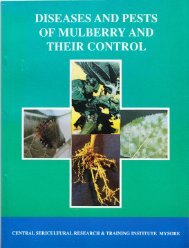

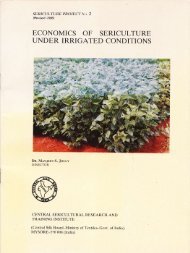
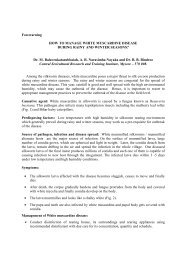
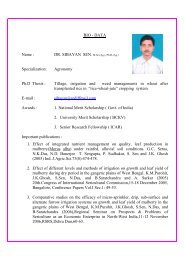
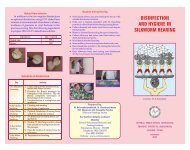
![E}A]\GALORE](https://img.yumpu.com/54052619/1/190x260/eagalore.jpg?quality=85)

